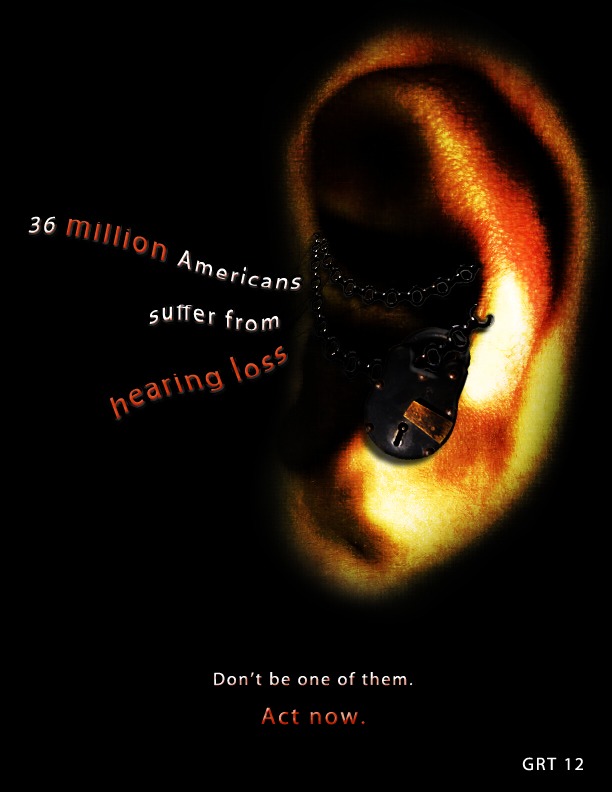Factors Affecting the Cost of Graphic Design Courses
The cost of graphic design courses can vary significantly based on several factors. Understanding these elements can help prospective students make informed decisions about their education investments. From the course content and duration to the reputation of the institution, multiple aspects influence the overall fees, making it essential to consider all variables before enrolling.
Institution Type and Reputation
The fees for graphic design courses are significantly influenced by the type of institution offering the program and its overall reputation. Prestigious universities and well-known design schools tend to charge higher tuition fees due to their established credibility, expert faculty, and advanced facilities. Conversely, online platforms and smaller institutions often provide more affordable options, though they may vary in the quality of education and resources. The reputation of an institution can also impact perceived value, with highly reputed institutions justifying higher costs because of their strong industry connections, comprehensive curriculum, and successful alumni networks. Ultimately, students must weigh these factors against their budget and career goals to choose a program that offers the best balance of quality and affordability.
Course Duration and Intensity
Factors Affecting the Cost of Graphic Design Courses, Course Duration and Intensity
The cost of graphic design courses can vary significantly based on several factors, including the course duration and intensity. Longer courses or those that are more intensive typically require more resources, instructors, and materials, which can increase the overall fee. Shorter programs may be less expensive but might offer less comprehensive training. The depth of the curriculum and the complexity of skills taught also influence pricing; more advanced or specialized courses tend to cost more. Additionally, courses with hands-on projects, individualized feedback, and expert instruction often have higher fees to reflect the quality and level of engagement. Ultimately, prospective students should consider both the duration and intensity of a course to determine its value relative to its cost, ensuring it aligns with their learning goals and budget.
Curriculum Depth and Content
The cost of graphic design courses is significantly influenced by the depth and content of the curriculum offered. Courses that provide comprehensive coverage of various design principles, software tools, and practical projects tend to be more expensive due to the extensive resources and expertise involved. Additionally, programs that include specialized modules such as branding, animations, or user interface design typically command higher fees. The complexity and scope of the curriculum directly impact the overall expenses, reflecting the value and depth of education provided to students. Institutions that invest in up-to-date materials, industry-standard software, and experienced instructors often charge higher fees to cover these quality enhancements.
Location and Accessibility
The fees for graphic design courses can be significantly influenced by location and accessibility. Courses offered in major cities or metropolitan areas typically have higher tuition fees due to higher operational costs and the demand for quality education. Accessibility also plays a crucial role; institutions that are easily reachable and offer flexible scheduling options tend to charge more to accommodate diverse student needs. Additionally, the proximity to industry hubs can increase the course fees because of the added value of networking opportunities and industry exposure. Conversely, courses in remote or less accessible regions may have lower fees but might lack advanced resources or industry connections, affecting overall costs and value.
Delivery Method: Online vs. In-Person
The fees for graphic design courses can vary significantly depending on the delivery method chosen. Online courses often have lower costs due to reduced overhead expenses, allowing for more affordable tuition fees. In contrast, in-person courses tend to be more expensive because of additional costs related to physical space, materials, and in-person instruction. The format also influences the overall fee structure, with online programs offering flexible pricing options, discounts, and often free resources, while in-person courses may include costs for studio access, equipment use, and transportation. Additionally, the level of interaction, mentorship, and hands-on experience provided can impact the costs associated with each delivery method. Ultimately, prospective students should consider their budget alongside the benefits of each format when selecting a course.
Types of Graphic Design Courses and Pricing
Exploring the different types of graphic design courses and their pricing options is essential for aspiring designers looking to develop their skills. With a variety of course formats available, such as online classes, in-person workshops, and full certification programs, learners can choose based on their budget and learning preferences. Understanding the cost structure of these courses helps students make informed decisions and find options that best fit their financial plans for a successful career in graphic design.
Certificate Programs
Graphic design courses come in various types, each tailored to different skill levels and areas of specialization. Popular options include beginner courses that introduce foundational concepts, intermediate courses that focus on specific tools like Adobe Photoshop or Illustrator, and advanced programs that cover branding, UI/UX design, and motion graphics. Certificate programs are also widely available, offering credentials that can boost professional credibility and job prospects. Pricing for these courses varies significantly depending on factors such as course length, depth of content, and institution reputation. Online courses generally range from affordable to premium fees, with many offering flexible payment plans. In-person workshops and bootcamps tend to be more expensive but provide hands-on experience and direct instructor interaction. Certificate programs typically cost between a few hundred to several thousand dollars, depending on the comprehensiveness of the curriculum and certification level offered. It is essential to consider not only the fees but also the value of the skills gained and potential career advancement opportunities.
Diploma and Degree Programs
Graphic design courses are available in various formats to suit different learning needs, including short-term workshops, certificate programs, diploma courses, and full degree programs. Short-term courses typically focus on specific skills like typography, branding, or Adobe Creative Suite, and their prices can range from $200 to $1,000 depending on the depth and institution. Diploma programs are more comprehensive, often lasting from six months to a year, and can cost between $1,000 and $5,000. Degree programs, such as Bachelor’s or Master’s degrees in Graphic Design, are more extensive and expensive, with tuition fees ranging from $10,000 to over $30,000 per year, depending on the university and country. These programs generally provide a thorough education, including theory, practical skills, and portfolio development, preparing students for professional careers in graphic design.
Workshops and Short-Term Classes
Graphic design courses come in various types, catering to different skill levels and interests. These include foundational courses that cover basic principles, specialized courses focusing on areas like typography, branding, or UI/UX design, and advanced programs for professional development. Pricing varies widely depending on the course duration, reputation of the institution, and the depth of content offered. Workshops and short-term classes are popular options for those seeking to upgrade skills quickly, often priced more affordably to accommodate hobbyists and working professionals. Generally, basic workshops can range from $50 to $300, while comprehensive courses may cost $500 or more, with premium programs exceeding $2000. Some institutions offer bundled packages or discounts for early registration, making it essential to compare prices and course content carefully to find the best value for your investment.
Online Courses and Bootcamps
When considering fees for graphic design courses, it is important to explore the different types available, including online courses and bootcamps, to find the best fit for your budget and learning style.
- Beginner Courses: Typically affordable, ranging from free to a few hundred dollars, designed for those new to graphic design.
- Intermediate and Advanced Courses: These can range from $200 to $1,000 or more, offering specialized skills such as typography, branding, or digital illustration.
- Online Courses: Usually cost between $50 and $500, providing flexible learning options from platforms like Udemy, Coursera, or LinkedIn Learning.
- Bootcamps: Intensive programs that often cost between $3,000 and $20,000, focusing on hands-on training and portfolio building to fast-track your career.
It’s important to consider the course content, instructor expertise, and certification when evaluating pricing options, ensuring you invest in quality education that aligns with your goals and budget.
Typical Fee Ranges for Graphic Design Courses
Understanding the typical fee ranges for graphic design courses is essential for prospective students looking to enter this creative field. Fees can vary widely depending on the course duration, institution, and level of expertise offered. By exploring these fee ranges, individuals can better plan their educational investments and select a program that fits their budget and career goals.
Basic Online Courses
Typically, the fee ranges for basic online graphic design courses vary depending on the platform, course content, and duration. These courses are often designed to be affordable for beginners seeking foundational skills in graphic design.
- Free courses that offer basic introductions to graphic design concepts
- Courses costing between $20 and $50 for comprehensive beginner modules
- Intermediate courses ranging from $50 to $150 that include more detailed tutorials and projects
- Advanced or specialized courses that may cost $200 or more, often including certifications
Overall, for basic online graphic design courses, learners can expect to spend anywhere from free to around $150, with variations based on the course provider and the level of instruction provided.
Advanced Certification Programs
Typical fee ranges for graphic design courses and advanced certification programs vary depending on the institution, course duration, and content. Entry-level graphic design courses generally cost between $500 and $3,000, offering a foundational understanding of design principles and software tools. Advanced certification programs, which often include specialized skills and hands-on projects, tend to range from $3,000 to $15,000 or more. Online courses tend to be more affordable, with many options available under $1,000, while in-person or intensive bootcamps may charge higher fees. It’s essential to consider the reputation of the program, the quality of instruction, and the benefits included when evaluating the cost.
University Degree Programs
Typical fee ranges for graphic design courses vary significantly depending on the type of program and institution. For short-term courses or workshops, fees generally range from $200 to $1,500. University degree programs, such as a bachelor’s in graphic design, tend to have higher fees, often ranging from $5,000 to $45,000 per year for domestic students. International students may face higher costs, sometimes doubling these amounts. Specialized diploma programs or certification courses can cost between $1,000 and $10,000. It’s important to consider additional expenses such as materials, software, and living costs when budgeting for a graphic design education.
Specialized Workshops and Seminars
Typical fee ranges for graphic design courses, specialized workshops, and seminars can vary widely depending on the program’s depth, duration, and institution. Basic online courses or short workshops may cost between $50 and $300. In contrast, more comprehensive certificate programs or intensive workshops offered by reputable institutions generally range from $500 to $3,000. Seminars and advanced training sessions, especially those held in prestigious settings or led by industry experts, can cost upwards of $2,000 to $5,000 or more. It’s important for prospective students to consider the quality, reputation, and outcomes of the program when evaluating cost options.
Additional Costs to Consider
When enrolling in a graphic design course, it’s important to be aware of additional costs beyond the basic tuition fee. These extra expenses can significantly impact your overall budget and may include materials, software licenses, and optional workshops. Understanding these potential costs helps you plan more effectively and ensures a smoother learning experience.
Materials and Supplies
When enrolling in a graphic design course, it’s important to consider additional costs beyond the tuition fees. Materials and supplies play a crucial role in your learning experience and overall expenses. Students are often required to purchase specific tools such as high-quality sketchbooks, graphic tablets, and professional software licenses like Adobe Photoshop and Illustrator. These tools can vary in price, with some software offering subscription models that add to ongoing costs. Additionally, printing supplies, calibration devices, and reference books may be necessary to enhance your projects and skills. Budgeting for these materials ensures you have everything needed to succeed without unexpected financial stress.
Software Licenses and Subscriptions
When evaluating the fees for a graphic design course, it is important to consider additional costs that may arise beyond the basic tuition. Software licenses and subscriptions are a significant part of these expenses, as professional graphic design often requires access to advanced tools and software. Many courses introduce students to industry-standard programs such as Adobe Creative Cloud, which involves a monthly or yearly subscription fee. These costs can add up over time and should be factored into your overall budget for the course. Additionally, some courses may require purchasing specific plugins, fonts, or stock images, further increasing your investment. Being aware of these potential expenses ensures you are prepared financially and can make informed decisions about your professional development in graphic design.
Examination and Certification Fees
When enrolling in a graphic design course, it’s important to consider additional costs beyond tuition fees, such as examination and certification fees. These expenses can add up and should be factored into your overall budget to avoid unexpected financial burdens.
- Examination Fees: Many certification programs or advanced courses require students to pay for assessments or exams that validate their skills and knowledge in graphic design.
- Certification Fees: Obtaining certifications from recognized industry bodies or course providers often involves a fee, which can vary depending on the level and prestige of the certification.
- Re-examination Costs: Some programs charge extra if you need to retake exams or assessments to improve your scores or meet requirements.
- Recognition and Accreditation Fees: Certain courses may offer additional accreditation services or certified transcripts that come with extra costs.
- Optional Workshops or Extra Modules: Additional certification or exam preparation workshops may be available at an extra cost to enhance your skills and credentials.
Considering these costs in advance can help you plan your budget and ensure you are financially prepared to complete the certification process successfully.
Accommodation and Travel Expenses
When evaluating the fees for a graphic design course, it is important to consider additional costs beyond the tuition fee. Accommodation expenses can significantly impact your overall budget, especially if the course is held in a different city or country. Students should research nearby housing options, whether it’s shared apartments, dormitories, or extended stay hotels, to estimate these costs accurately. Travel expenses are another crucial factor; this includes transportation to and from the course location, such as flights, train tickets, or daily commuting costs. Planning for these expenses in advance can help avoid financial surprises and ensure a smoother learning experience. Budgeting for these additional costs is essential for a comprehensive understanding of the total investment required for a graphic design course.
Financial Aid and Discounts
Financial aid and discounts can play a vital role in making a graphic design course more accessible and affordable for prospective students. By exploring various financial assistance options and special offers, learners can reduce the overall cost of their education and focus on developing their creative skills. Understanding these opportunities can help aspiring designers make informed decisions and invest confidently in their future careers.
Scholarships and Grants
Financial aid, discounts, scholarships, and grants can significantly reduce the cost of a graphic design course, making it more accessible for many students. Institutions often offer various forms of support to help students cover tuition fees and related expenses.

Many graphic design programs provide scholarships based on academic achievement, artistic talent, or financial need. These awards usually do not have to be repaid and can cover a portion or the full cost of tuition.
Grants are another form of financial assistance that students may qualify for, often provided by government agencies, non-profit organizations, or educational institutions. Grants are typically need-based and can help reduce the overall cost of the course.
In addition to scholarships and grants, some schools offer discounts for early registration, group enrollments, or returning students. It’s advisable to explore all available options and apply for financial aid early to maximize the chances of receiving support.
Early Bird and Group Discounts
Our graphic design course offers various financial aid options and discounts to make learning accessible for everyone. We provide early bird discounts for those who register soon after registration opens, allowing students to save a significant amount on their tuition fees. Additionally, group discounts are available for teams or organizations enrolling multiple students, making it more affordable for companies or groups committed to enhancing their skills.
Payment Plans and Financing Options
Our graphic design course offers a variety of financial aid opportunities and discounts to help make your education more affordable. We provide early registration discounts, group rates, and seasonal promotions to reduce the overall cost. Additionally, flexible payment plans are available to accommodate your financial situation, allowing you to spread out payments over several months. For those needing further assistance, financing options are also offered, often in partnership with third-party organizations, making it easier to invest in your future as a designer without immediate full payment.





